Studio Visit
At Age 94, Op Artist Julio Le Parc Continues to Work Every Day in His Paris Studio of Enchanting Colors. See It Here
The artist is still painting every day.

The artist is still painting every day.

Sarah Cascone

At the age of 94, Argentinian artist Julio Le Parc, a giant of the Kinetic and Op Art movements, is still working tirelessly, each and every day. This fall, he will have his first solo show at a Mexican gallery, Galería RGR in Mexico City.
The works on view include both recent and historical pieces, but all stick to Le Parc’s chosen palette, a strict scale of 14 colors. These chromatic bands are applied in crisp wavy lines or concentric circles, or with carefully placed dots creating confetti-like fields of color against black backgrounds.
There are also acrylic mobiles, which create the captivating interplays of light and motion that the artist has mastered over his six-decade career. Le Parc’s shimmering displays are all made with the viewer in mind, experimenting with perception to achieve remarkable marriages of form, color, and movement.
Despite his advanced age, Le Parc is still hard at work, spending every day in his atelier in the Paris suburb of Cachan.
We caught up with the artist about his practice and life in the studio.

Julio Le Parc’s studio in Cachan, France, a suburb of Paris. Photo by Gregory Copitet, courtesy of Galería RGR.
Tell us about your studio. Where is it, how did you find it, and what kind of space is it?
My studio is in my home near Paris. When I found it in 1972, it was in ruins and, little by little, I fixed it over time. It is very spacious because it allows me to work and live simultaneously, not only for me but for the rest of my family too.
What is the first thing you do when you enter your studio after turning on the lights?
It is always good to leave something in progress at night when I go to sleep, which is around 3 in the morning. In that period of time between night and the next day, my mind can develop possibilities and make solutions. In the morning, I already have new ideas that have sprouted from what I was thinking the day before.
How many studio assistants or other team members work with you? And what do they do?
There are several assistants and the general director, Eduardo Berrelleza.
There are also people who’ve been with me for a long time, like my daughter-in-law, Eli.
There are people like Fabrice, who takes care of all the wood mechanics, and there are two Cuban helpers who take care of different mobile things. Then three women help me with creating small-scale models and maquettes—Laura, Marilu, and Alma—they can quickly help me with my direction.
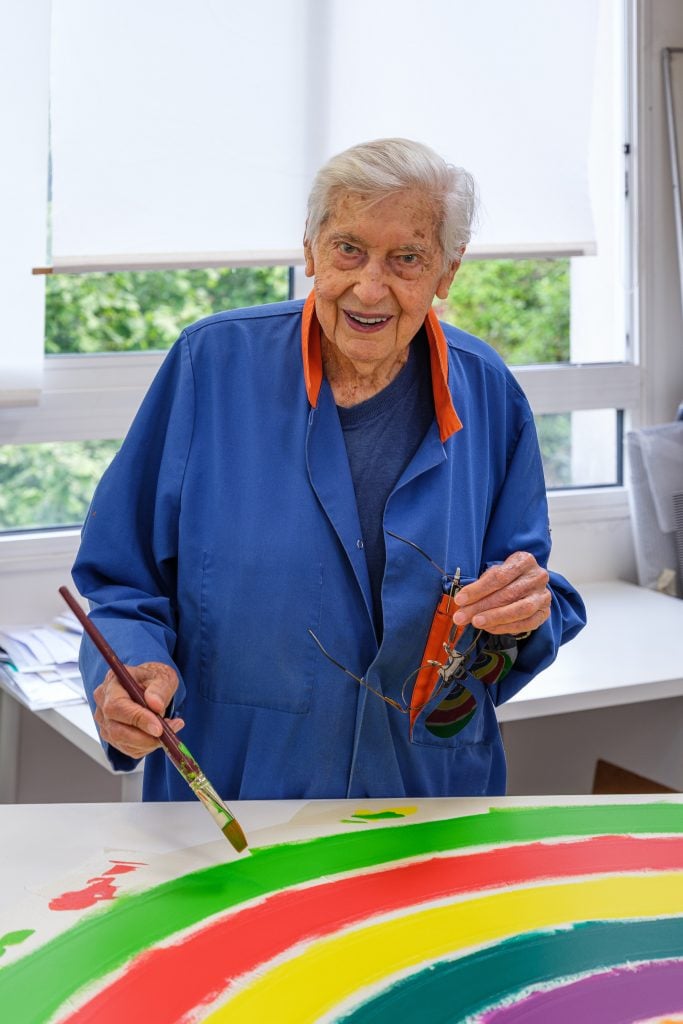
Julio Le Parc in his studio in Cachan, France, a suburb of Paris. Photo by Gregory Copitet, courtesy of Galería RGR.
How many hours do you usually spend in the studio? What hours do you work, and what activities do you spend most of your time on?
Well, one of the perks of not being an employee is that I can sleep in. When I wake up, I get on the road and go down to the workshop—somewhere between 9 and 10:30 in the morning, depending on when I start my day. Then, I continue working until around 7:30 or 8 at night.
Is there anything you like to listen to, watch, read, etc., while in the studio for inspiration or as background noise?
I listen to Radio Clásica, which broadcasts varied classical music all day. That accompanies me, not so much to inspire me, but as pleasant background noise.
What artistic tool or material do you like to work with the most?
A pencil.
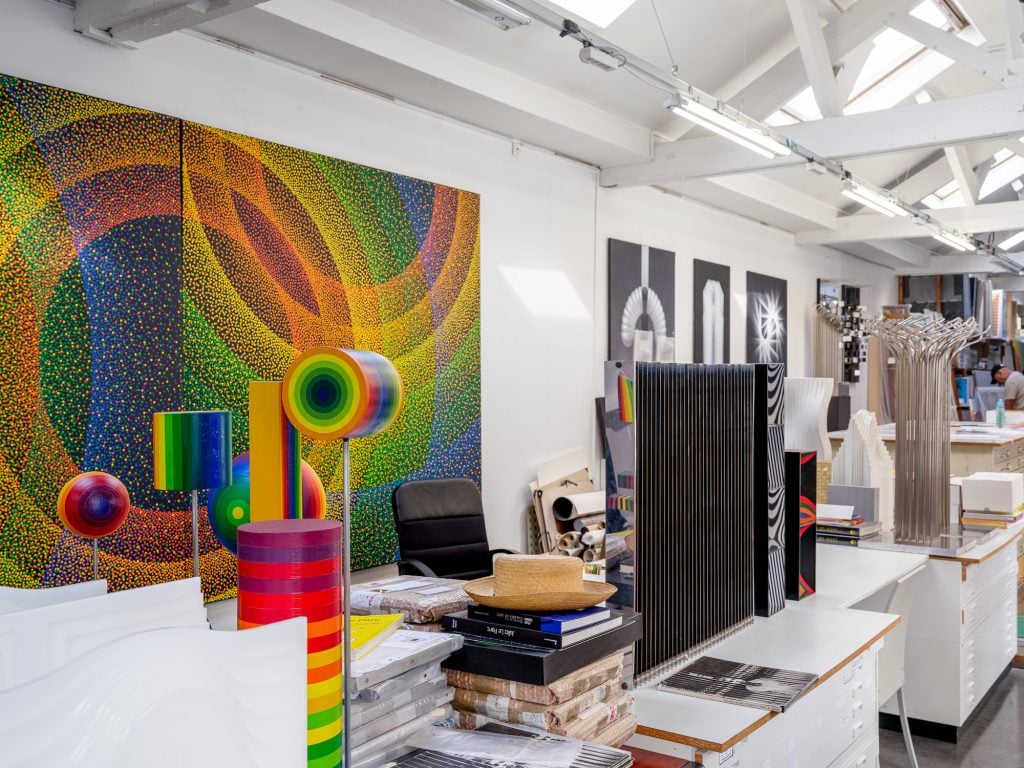
Julio Le Parc’s studio in Cachan, France, a suburb of Paris. Photo by Gregory Copitet, courtesy of Galería RGR.
Do you have a ritual around studio visits? How do you guide a visitor through your space and your work?
Eduardo, in particular, conducts group tours when visitors come into the studio. He shows them the light room and the different spaces where there are hanging works. And at the end I’m able to have conversations with those who visit.
If you feel a block while preparing an exhibition, what do you do to unblock it?
Overall, inspiration has never been a concern. Problems and blocks of whatever nature will always happen, whether it’s an installation, exhibition, or another project. With that, there is always room for different possibilities that can be used until you find something that works.
What do you like to do when you leave the studio at the end of the day?
When I go out at the end of the day, it’s dinner time. So, at that point, it’s time to prepare dinner with a companion, which I find relaxing. I enjoy that because it allows me to relax and spend time with whoever is accompanying me. It’s like a final break.
See more photos of Le Parc’s studio below.
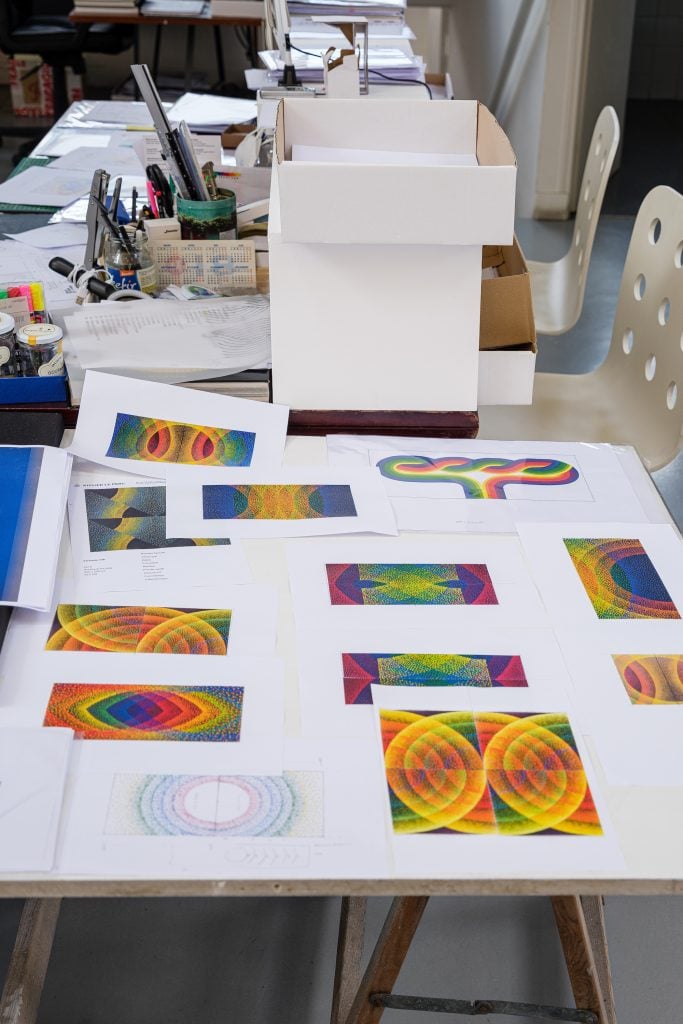
Julio Le Parc’s studio in Cachan, France, a suburb of Paris. Photo by Gregory Copitet, courtesy of Julio Le Parc’s studio in Cachan, France, a suburb of Paris. Photo by Gregory Copitet, courtesy of Galería RGR.
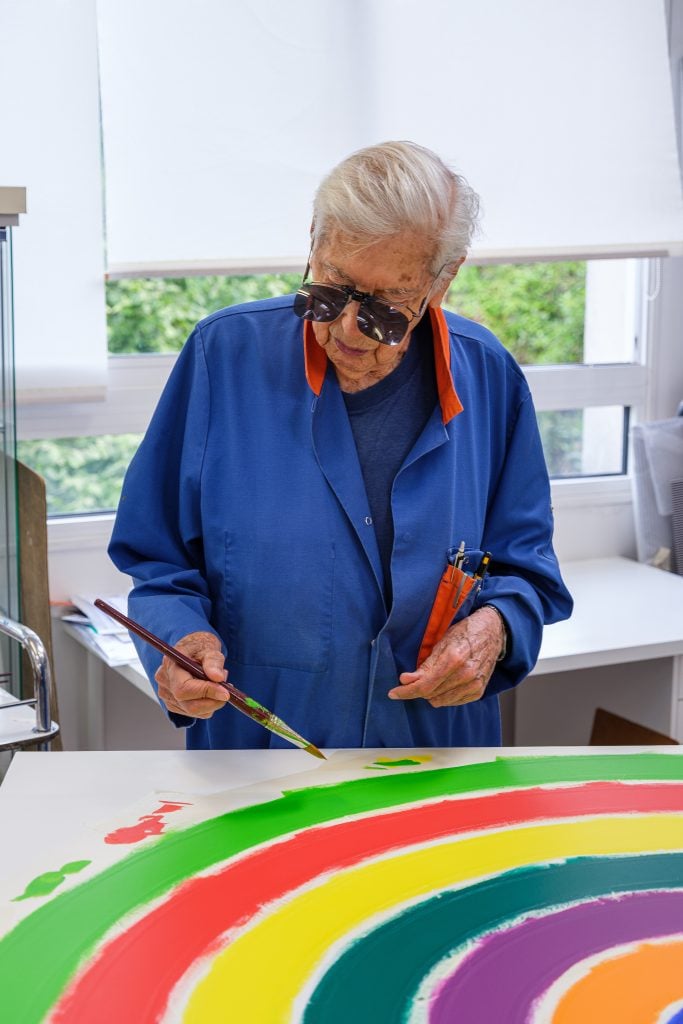
Julio Le Parc’s studio in Cachan, France, a suburb of Paris. Photo by Gregory Copitet, courtesy of Julio Le Parc’s studio in Cachan, France, a suburb of Paris. Photo by Gregory Copitet, courtesy of Galería RGR.
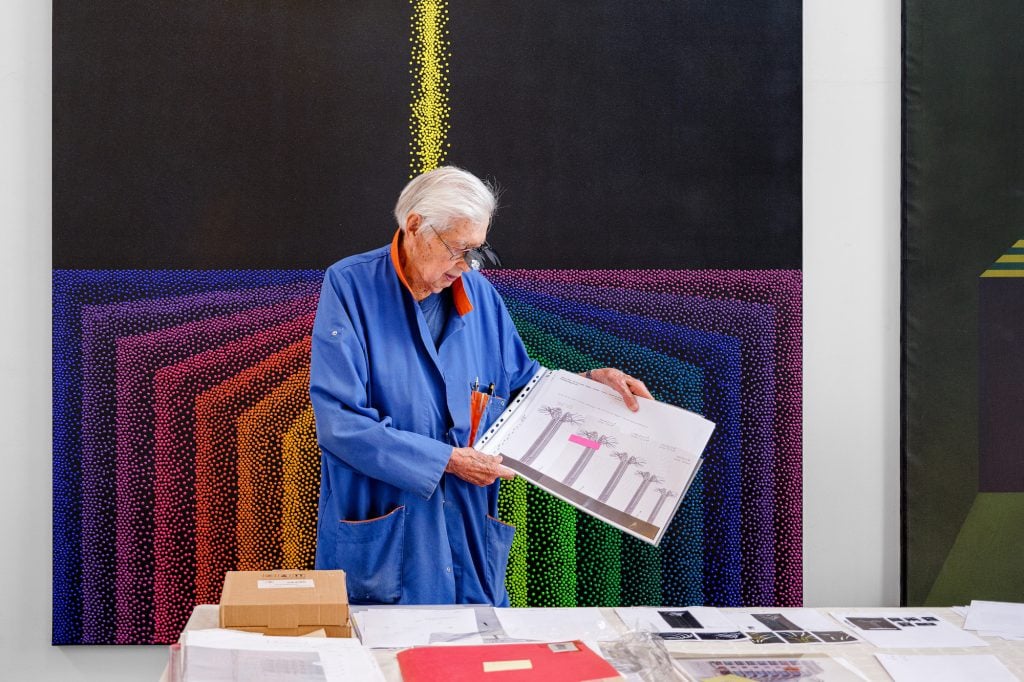
Julio Le Parc’s studio in Cachan, France, a suburb of Paris. Photo by Gregory Copitet, courtesy of Julio Le Parc’s studio in Cachan, France, a suburb of Paris. Photo by Gregory Copitet, courtesy of Galería RGR.

Julio Le Parc’s studio in Cachan, France, a suburb of Paris. Photo by Gregory Copitet, courtesy of Julio Le Parc’s studio in Cachan, France, a suburb of Paris. Photo by Gregory Copitet, courtesy of Galería RGR.
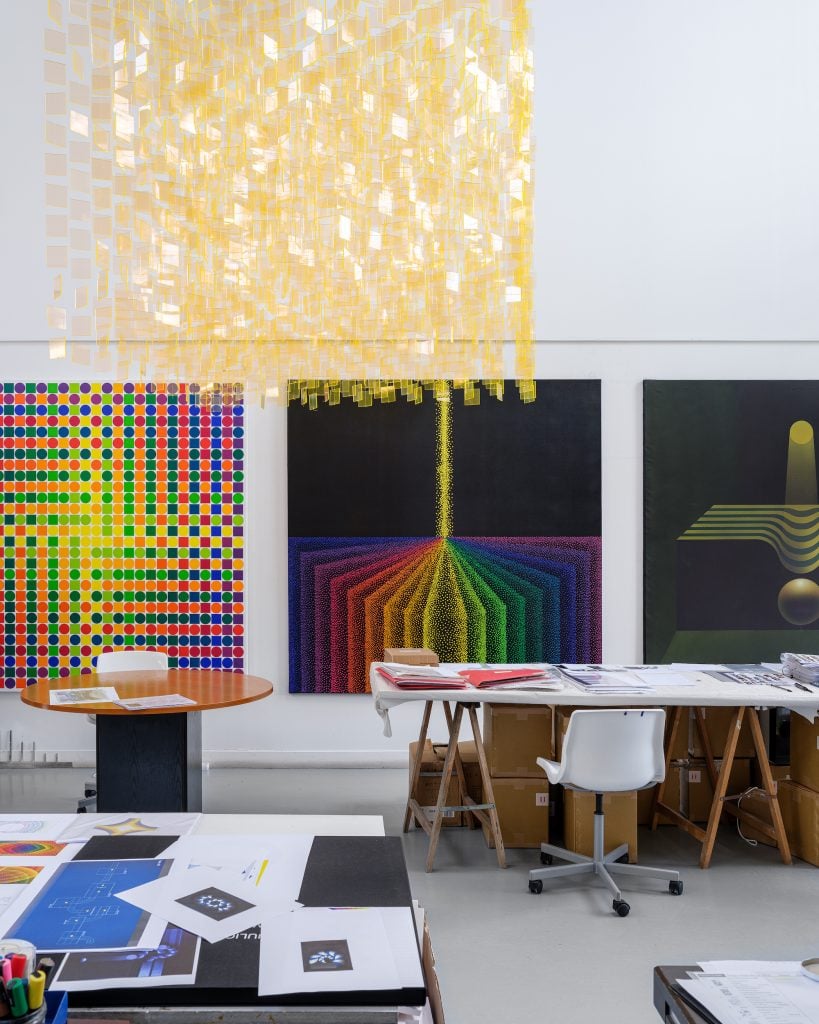
Julio Le Parc’s studio in Cachan, France, a suburb of Paris. Photo by Gregory Copitet, courtesy of Galería RGR.

Julio Le Parc’s studio in Cachan, France, a suburb of Paris. Photo by Gregory Copitet, courtesy of Galería RGR.
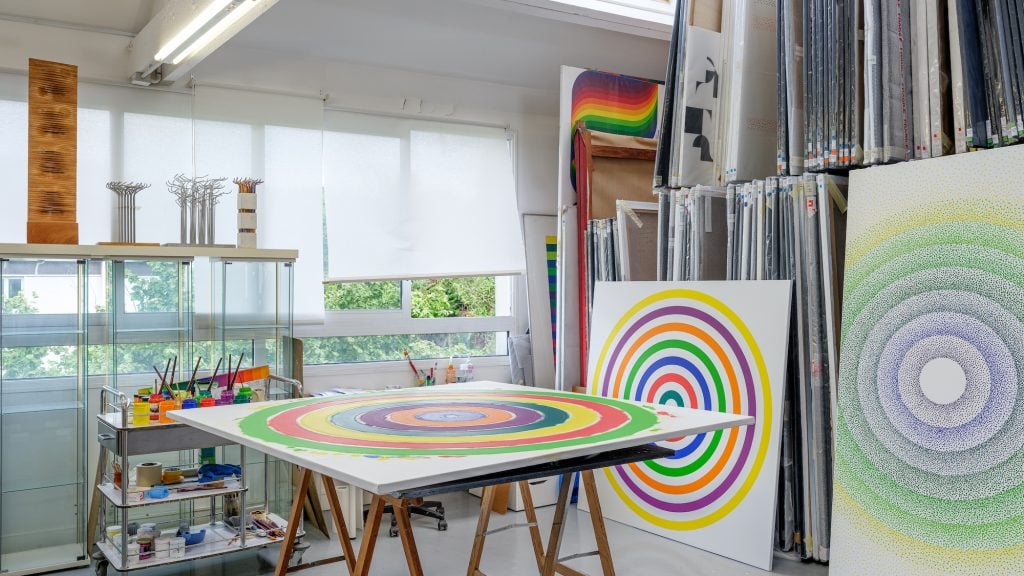
Julio Le Parc’s studio in Cachan, France, a suburb of Paris. Photo by Gregory Copitet, courtesy of Galería RGR.
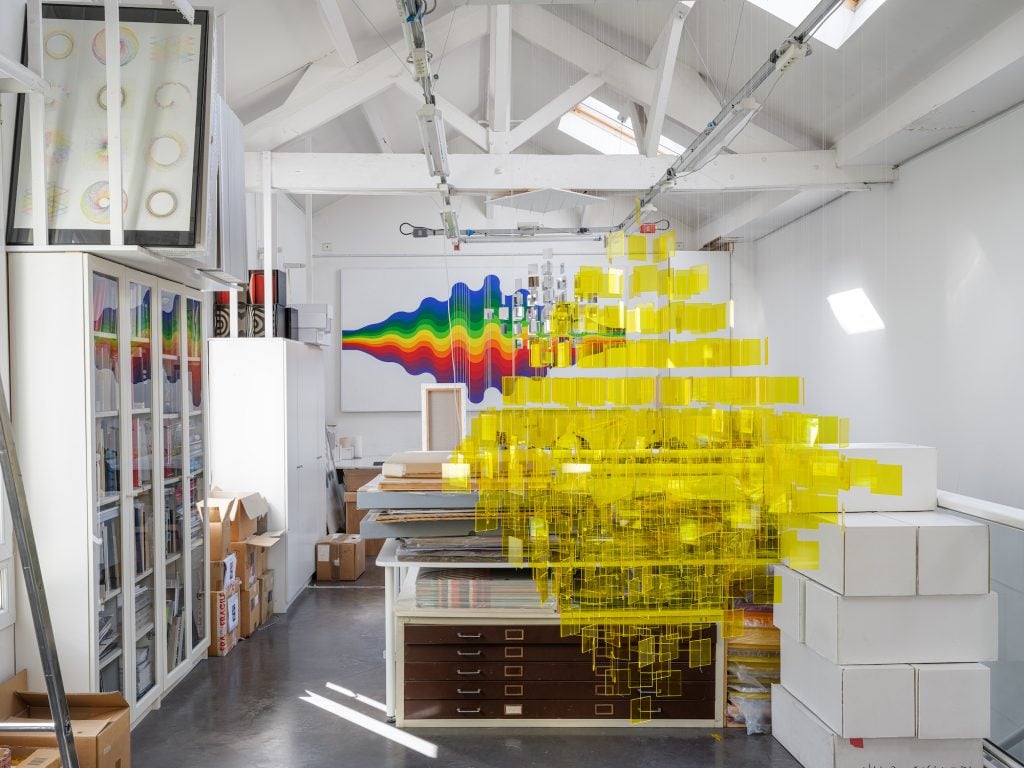
Julio Le Parc’s studio in Cachan, France, a suburb of Paris. Photo by Gregory Copitet, courtesy of Galería RGR.
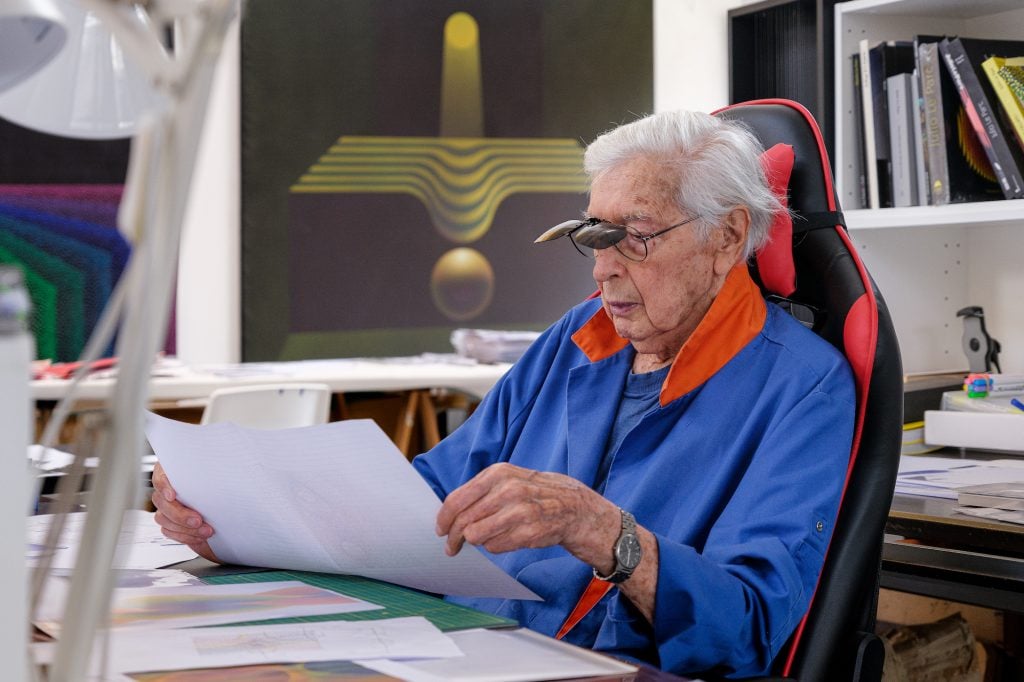
Julio Le Parc in his studio in Cachan, France, a suburb of Paris. Photo by Gregory Copitet, courtesy of Galería RGR.
“Julio Le Parc: Visual Encounters” is on view at Galería RGR, Calle Gral. Antonio León 48, San Miguel Chapultepec I Secc, Miguel Hidalgo, 11850 Mexico City, Mexico, September 22–November 12, 2022.